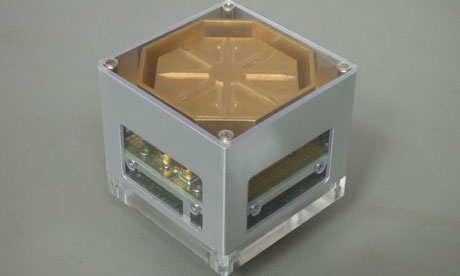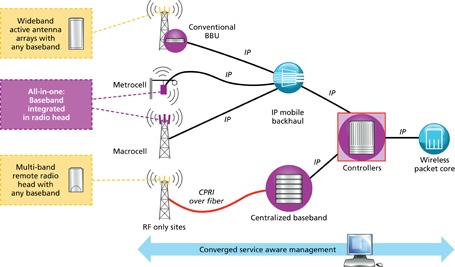
That headline definitely sounds dry, but hear me out. There’s been a gradual move from tower-based communications to more local stuff on top of buildings and so on, but this latest change might make towers extinct altogether. Alcatel-Lucent has put together a new compact radio stack called lightRadio that is small enough to be mounted on telephone poles, and could connect to the internet directly and provide packet service without ever touching a cell tower or repeater.
If I understand correctly, this thing takes the centrally-located (usually at the bottom of a tower) base station and combines it with the actual antennas needed to communicate with 2G, 3G, and 4G devices. The resulting device is independent and can manage its own packets via its own connection — or wirelessly offload them onto another node nearby.

It means that capacity can easily be increased by just installing a few more little cubes in a high-traffic area, and it also becomes a last-mile (or last-block) solution for broadband.
The little cubes are also way more efficient electricity-wise, using just half the amount the old system would. On the other hand, maintenance would be more costly, since more functionality is placed in satellite units and not centrally-located cabinets in private areas. A small price to pay, I think.
What I like is the fact that these can essentially create an ad-hoc network covering an entire city. Area-based intranets and local cloud storage, anyone?
I’m pretty sure I’m glossing over many interesting details, so head over to Alcatel-Lucent for more information — Ars Technica has some as well.